It’s time to get serious about quilting the Leaf Peepers Quilt! This week we are tackling the leaf blocks with two fun free motion quilting designs: Sharp Stippling and Paisley Shortcut. Learn how to quilt these designs in this new quilting tutorial:
Quick links to everything mentioned in this quilting tutorial:
Would you like to see how Sheri quilted second leaf block with walking foot style quilting? Click Here to find her tutorial!

How to Quilt Sharp Stippling
Sharp Stippling is a super simple free motion quilting design based on traditional Stippling. To create this new designs, we’re simply adding sharp points, which creates a flame-like texture and a convenient place to pause while quilting.
I prefer to quilt this design with long, skinny flame shapes. To begin quilting, it may help to think of the shape as a wiggly “V” and then gradually make the lines longer and more bendy as you gain more confidence with the design. The more you wiggle and bend your flame shapes, the more complex the Sharp Stippling design will appear.
Notice that as I quilted through the space, I made sure to fill the area completely so I didn't leave gaps behind. This is a technique of quilting in rows so you fill the space evenly and consistently and don't have to travel stitch back fill in gaps in the quilting.
If you've never quilted Sharp Stippling before, first try stitching it on a small 10-inch practice sandwich first. That can give you a lot of practice in a small space and you'll feel a lot more confident about quilting the design.
You can also mark the lines on your quilt with a fabric marking pencil. Make sure to test the pen or pencil first to be sure the marks will erase completely after you finished quilting quilt.

How to Quilt Paisley Shortcut
This is a funky quilting design that's a bit of a cheat from traditional Paisley. Instead of stitching bouncy echoes that connect at the tip of the teardrop shape, Paisley Shortcut breaks the rules. This design instead bounce-echoes to create a very open, echoey design – perfect for the narrow spaces in the Leaf Peepers quilt blocks.
Watch your speed as you quilt the arched shapes of this design. It's easy to begin moving your hands faster because it's a very simple, repetitive movement. If your hand speed up, just remember to put your foot down and also speed up your machine.
I picked certain colors on my Leaf Peepers Quilt to quilt with Sharp Stippling and Paisley Shortcut. It was easy and quick to fill the designs in these spaces using Vanilla Isacord Thread. Check out where I used these designs in this photo:

If free motion quilting is tricky for you please check out Sheri’s tutorial! She’s quilting Leaf Peepers one block at a time using only walking foot quilting. Click Here to check out her tutorial!
Let's go quilt,
Leah Day
Quick links to all the posts for the Leaf Peepers Quilt Along:
Week 1 (August 13): Piecing Tips
Week 2 (August 20): How to piece Block 1
Week 3 (August 27): How to piece Block 2
Week 4 (September 3): How to piece Block 3
Week 5 (September 10): How to piece Block 4 and a Basting Tutorial
Week 6 (September 17): Quilting Part 1
Week 7 (September 24): Quilting Part 2
Week 8 (October 1): Quilting Part 3
Week 9 (October 8): Quilting Part 4
BONUS! (October 15): How to Wash Your Quilt


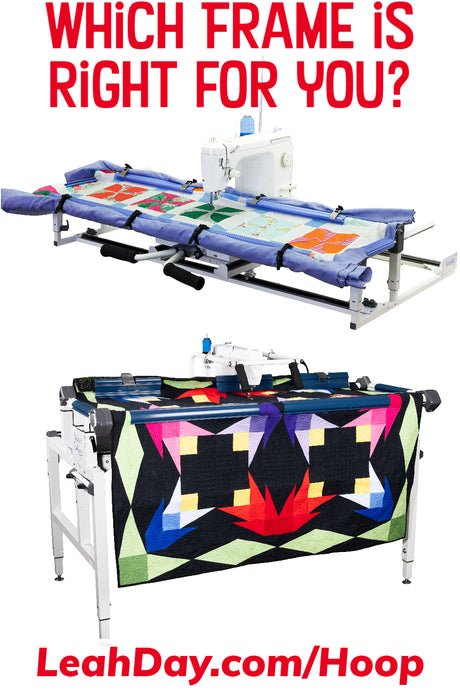
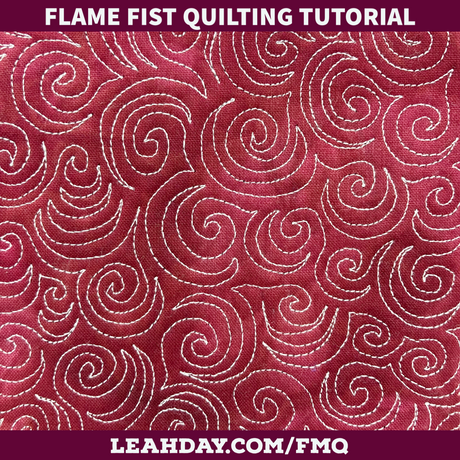
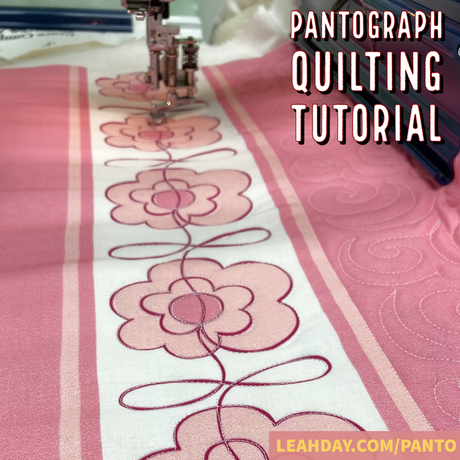
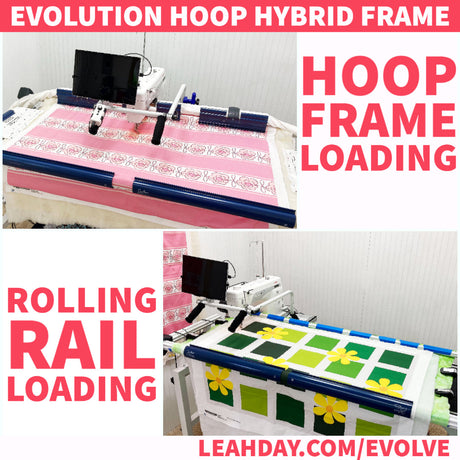
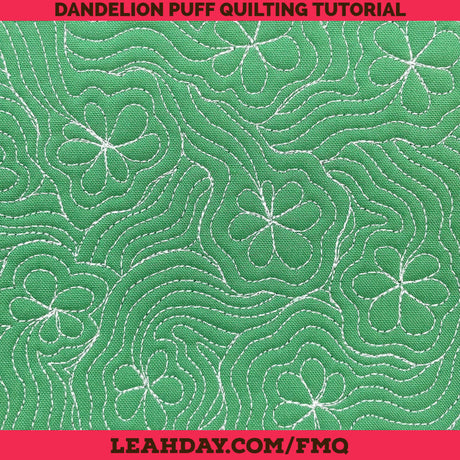
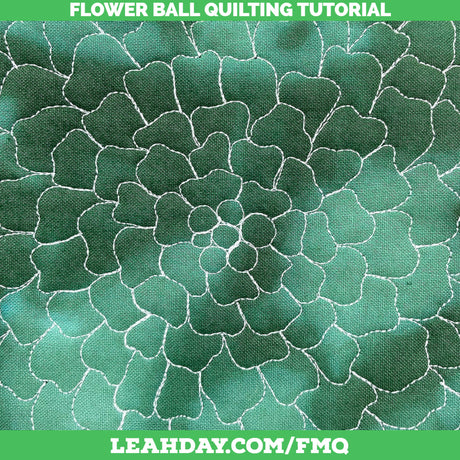
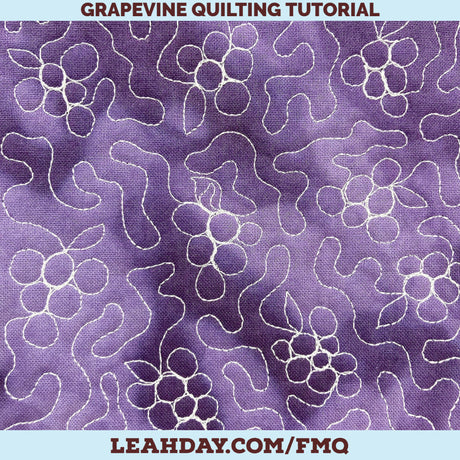
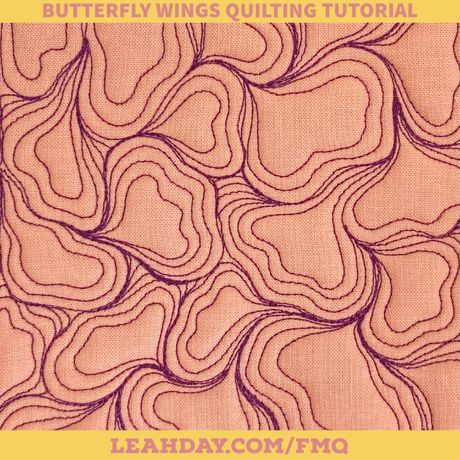
5 comments
Hi Nancy – Try rotating the hand wheel at the back of the machine. Longarms typically have hand wheels like home machines, they are just much further away so we don’t think to use them!
As I was quilting with my Tierra ll long arm the needle went down and I can’t get it to go back up. I have a quilt under the needle, and I am afraid to try anything. repair is closed until Tuesday.
Hi Bea and Claudette – Yep, that’s right! I don’t drop my feed dogs when free motion quilting. The feed dogs do not have to be dropped if you lower your stitch length to 0.0 mm, or your machine’s lowest setting.
At this setting, the feed dogs will move up and down, but they will not feed the quilt forward and pull against you. I find with the feed dogs up, I have fewer stitch issues, tension issues, and the top and bobbin threads both work better together. That’s just my experience! I hope you’ll try it too!
What do you mean you don’t drop your feed dogs?
Hi Leah, first I have to thank you for all your great tutorials. I love them so much, and because of them I’m the point to get inspired to try some FMQ on my regular sewing machine. In your Sharp Stippling and Paisley Shortcut ypu mentioned you are not lowering your feed dog. So far I always heard I have to do it to be able to move the quilt under the needle. How are you doing the quilting that way?